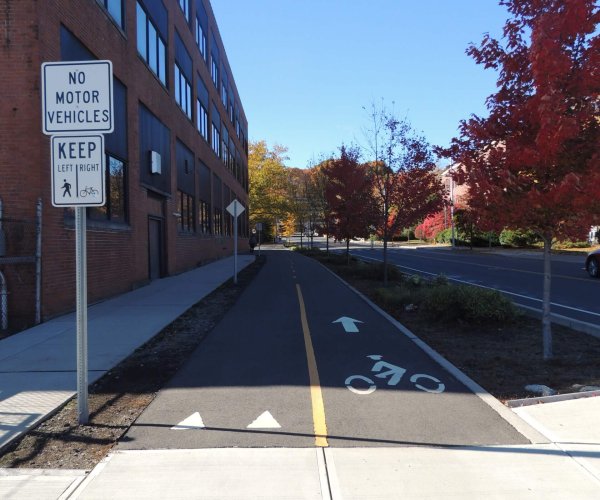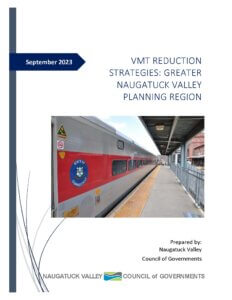What is VMT?
A common measure of transportation system performance is vehicle miles traveled (VMT), which looks at the total number of miles driven by personal cars across a given area. A reduction in VMT typically yields benefits for congestion, air quality, and can help reduce costs for drivers.
Executive Order 21-3
In December of 2021, Governor Lamont issues Executive Order 21-3. This order brought forward a series of new air quality policies, including requiring the Department of Transportation to set a VMT reduction goal, a strategy to hit that goal, and a list of project priorities in line with that strategy.

CTDOT’s VMT Reduction Goal
In response to EO 21-3, the CTDOT has developed and released a VMT reduction goal. This document, which identifies the key factors that impact VMT and the Department’s ability to impact these factors, sets a target of reducing per person miles driven by 5% by 2030. A five percent reduction would result in more than 2.5 million fewer miles driven each day, and well more than 1 billion fewer miles per year.
To achieve this target, CTDOT will need assistance from the 9 Councils of Governments, the 8 Metropolitan Planning Organizations, and all 169 towns and cities across the state. Reducing VMT is a complicated and multi-faceted goal, which will mean more walking/rolling, biking, and transit trips, better access to stores and services within closer distances of where people live, and encouraging travelers to reduce trips where possible through telework, rideshare, and mode choice.
NVCOG’s VMT Reduction Strategy
To assist the Department in identifying projects toward this end while also pushing forward transportation priorities in the Naugatuck Valley region, the NVCOG has prepared a regional response that includes VMT reduction strategies and a list of key projects. This report includes strategies and projects identified in the key areas of VMT reduction, including:
- Transit service increase, including a rationalization and increase in frequency on local bus service in Waterbury, Bristol, and the Lower Valley, as well as further increases in frequency along the Waterbury Rail Line.
- Complete Streets Implementation, particularly along important urban streets in our city and town centers. As many of the roads that make up Main Streets are state owned, implementation of high-quality complete streets projects can make cycling, walking, and rolling an easier and safer option for all.
- Active Transportation projects including completion of the Naugatuck River Greenway and the multi-use paths that break off it into towns and cities not directly along the Naugatuck River.
- An analysis of community zoning and development policy to highlight those communities where increased density and Transit-oriented developments can help bring homes closer to the services that residents need.
Share Your Input
Public input is welcome and annual updates to the strategy are planned to ensure its effectiveness and relevance to the community needs. Comments can be sent to contactus@nvcogct.gov.
Staff Contact:
Rich Donovan
Transportation Planning Director
rdonovan@nvcogct.gov

